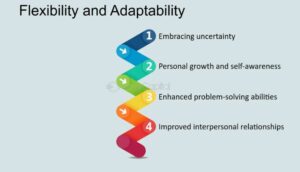
Internet Plan
Choosing the best internet plan to meet your household’s needs can be a challenge. Many options are available, and not all of them will fit the bill. This article will offer some insight into what you need to understand to choose the right internet plan for any household.
Understanding Household Needs
The first step to picking a great internet plan isn’t looking into local providers. It’s getting a clear understanding of the household’s needs. Start by considering how many people will be using the internet at once, then think about how they will most likely use it. Activities like streaming videos, playing online games, or videoconferencing for work will require a higher-speed plan than would be required for simply checking email, particularly if several people are engaging in them at once.
When considering the household’s internet needs, don’t forget to look to the future. Today’s homes quickly accumulate smart devices that all rely on the internet to work. It’s safe for most families to assume that they’ll be adding more IoT-equipped items to their homes as they become popular, not taking them away.
Understanding Speed and Bandwidth
The two most crucial factors to consider when choosing a new internet plan are speed and bandwidth. Speed is measured in megabits per second (Mbps), which determines how quickly data is transferred to and from devices. Bandwidth is a little different. It refers to the maximum amount of data that can be transmitted over an internet connection at once. Most households need both high-speed internet and plenty of bandwidth to function normally.
Households with heavy internet use will find that a plan with substantial bandwidth is a must. It will be clear if the household’s current plan doesn’t have enough bandwidth because videos will buffer, games will lag, and everyone using the internet will become frustrated.
The Great Debate: Fiber vs. DSL vs. Cable
Speed and bandwidth are critical, but so is the type of internet connection you choose. The three primary types of internet connections are fiber, DSL, and cable. Fiber optic internet is very fast and extremely reliable. It can reach speeds of up to 1 Gbps or more. However, it’s not available in all areas.
Cable internet is much more widely available than fiber optic, and its speeds are sufficient for most household uses. Cable internet gets its name from the fact that it uses the same coaxial cables as cable TV. It’s less expensive than fiber internet but doesn’t provide ultra-fast speed.
DSL is short for Digital Subscriber Line. It’s the most affordable option because it uses existing telephone lines to provide internet access. DSL is slower than fiber and cable, but it’s a good choice for light internet users. In some cases, it’s also the only choice. In rural areas, DSL internet may be the best option because it’s the only one aside from expensive, high-latency satellite connections.
How to Choose the Right Internet Plan
Now that you have a clearer idea of what the key terms mean and what options may be available, it’s time to make a final decision. Narrow down options to what’s available in the area and come up with a clear, realistic budget. Choose the type of internet connection that will offer the fastest speed and most bandwidth within that budget, and then find a company that provides excellent customer service.







